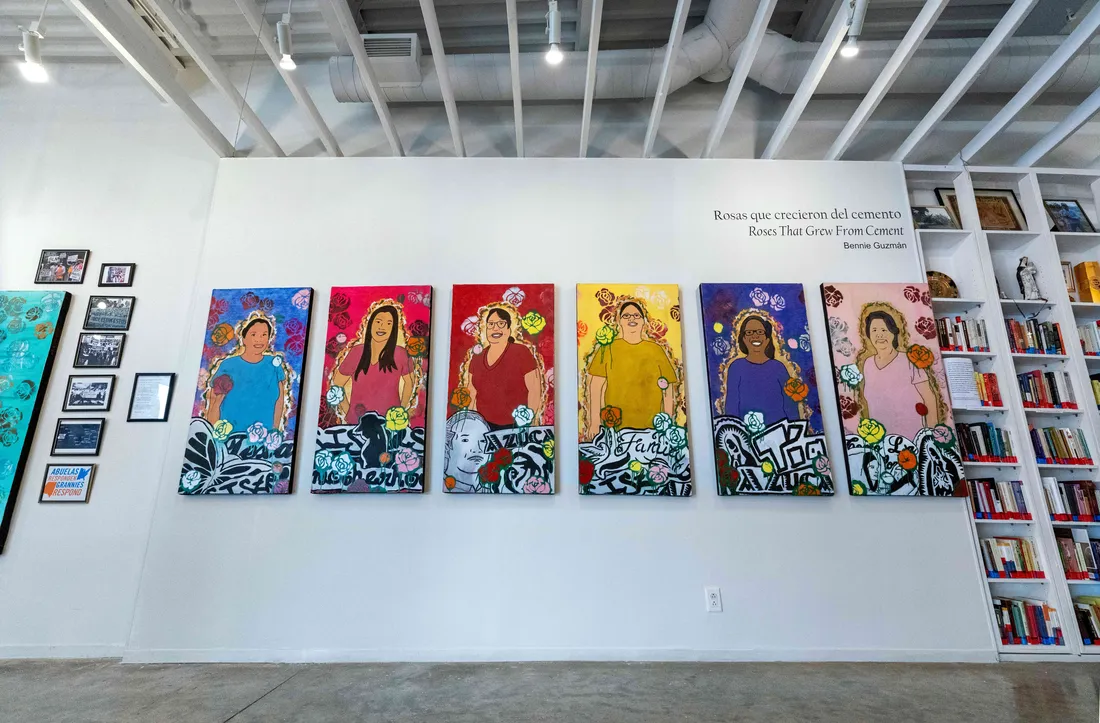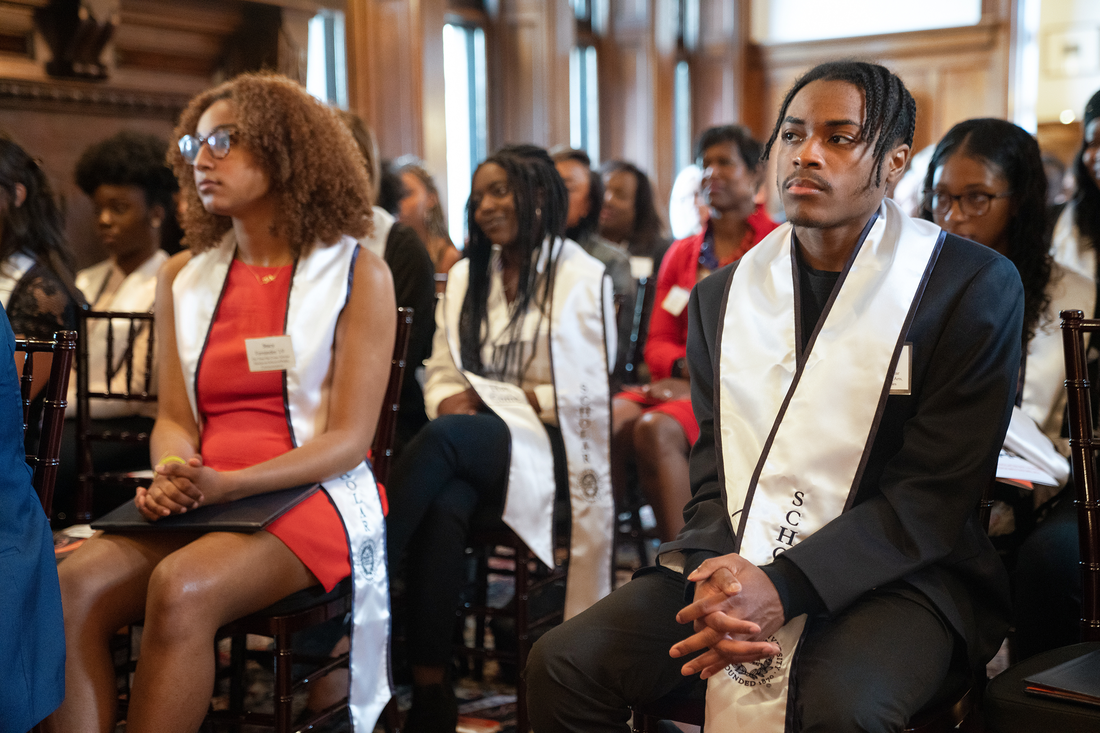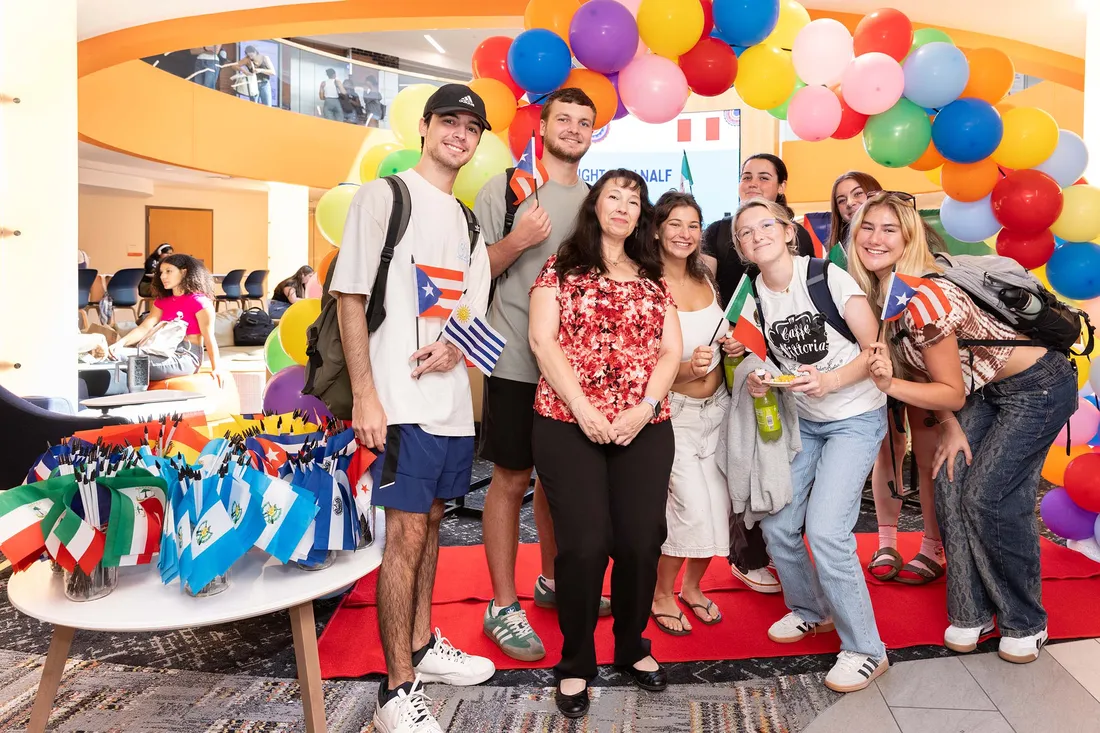
Emma Ticio Quesada (third from left), professor of Spanish and linguistics, with students at the Latine Heritage Month Opening Ceremony.
When Tere Paniagua ’82 graduated from Syracuse University, the telecommunications major thought she had left Central New York for good. “I went home but then ended up working in New York City and LA,” recalls the former newspaper and magazine editor. “I had no idea I’d come full circle.”
Almost two decades later, Paniagua joined the faculty of the College of Arts and Sciences, teaching a course of her own design, Hispanic Journalistic Practices (SPA 402), in the Department of Languages, Literatures and Linguistics (LLL). She also became managing director of Punto de Contacto-Point of Contact (POC), a nonprofit collaborative exploring the contemporary visual and verbal arts.
It was with considerable fanfare that Paniagua helped establish La Casita Cultural Center in 2011. Strategically located in Syracuse’s Near Westside neighborhood (home to growing numbers of Puerto Rican and Cuban families), La Casita figures prominently in the University’s promotion of ethnic diversity and multiculturalism. The center, along with POC, also is the linchpin in campuswide celebrations of Latine Heritage Month (Sept. 15-Oct. 15).
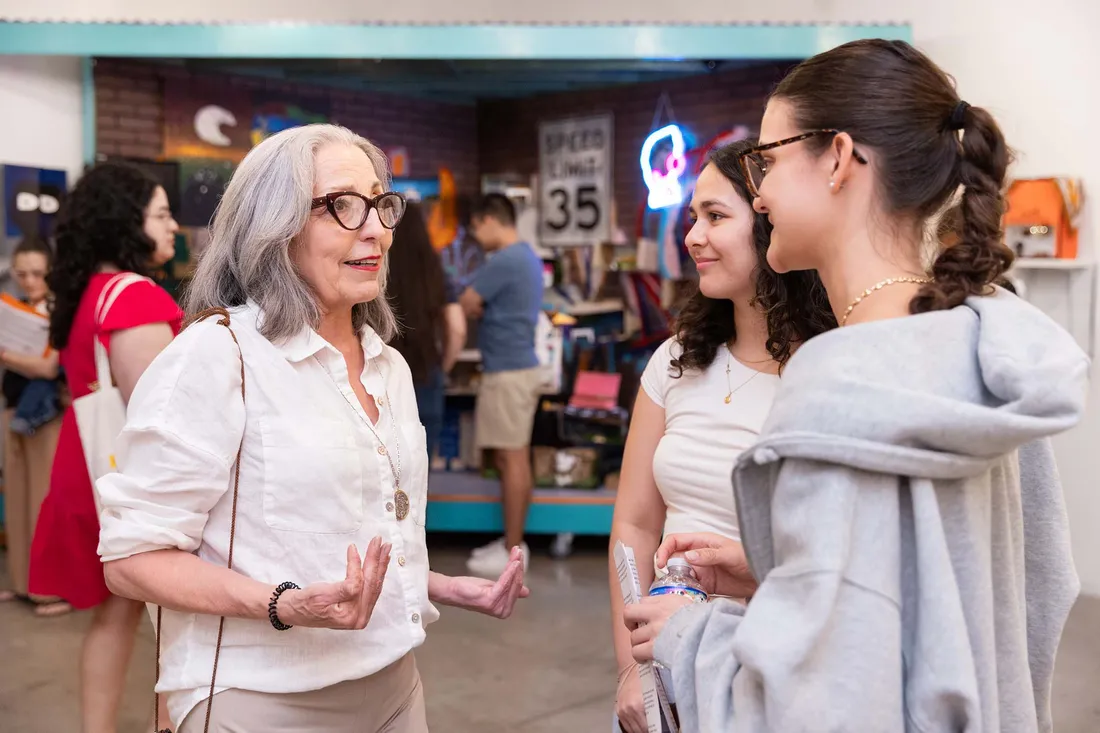
Tere Paniagua ’82, executive director of the Office of Cultural Engagement for the Hispanic Community, helped developed Pulso Central, this region’s first Spanish-language radio station.
“Heritage Month involves arts and cultural programming, which creates meaningful public impact and community engagement,” says Paniagua, now executive director of the Office of Cultural Engagement for the Hispanic Community, which manages both La Casita and POC. “It’s a celebration that’s becoming more diverse and inclusive with each passing year.”
Paniagua’s downtown office serves not only local and regional families, but also students from myriad academic backgrounds, including the creative and performing arts, the humanities, and social sciences. Such interaction often takes the form of experiential learning and advanced research opportunities.
“Our students use these centers to gain invaluable cultural competencies and career skills,” says Paniagua, who recently co-founded and co-chaired a community task force to develop Pulso Central, this region’s first Spanish-language radio station. “They’re preparing for success in an interconnected world.”
Creating a Mosaic
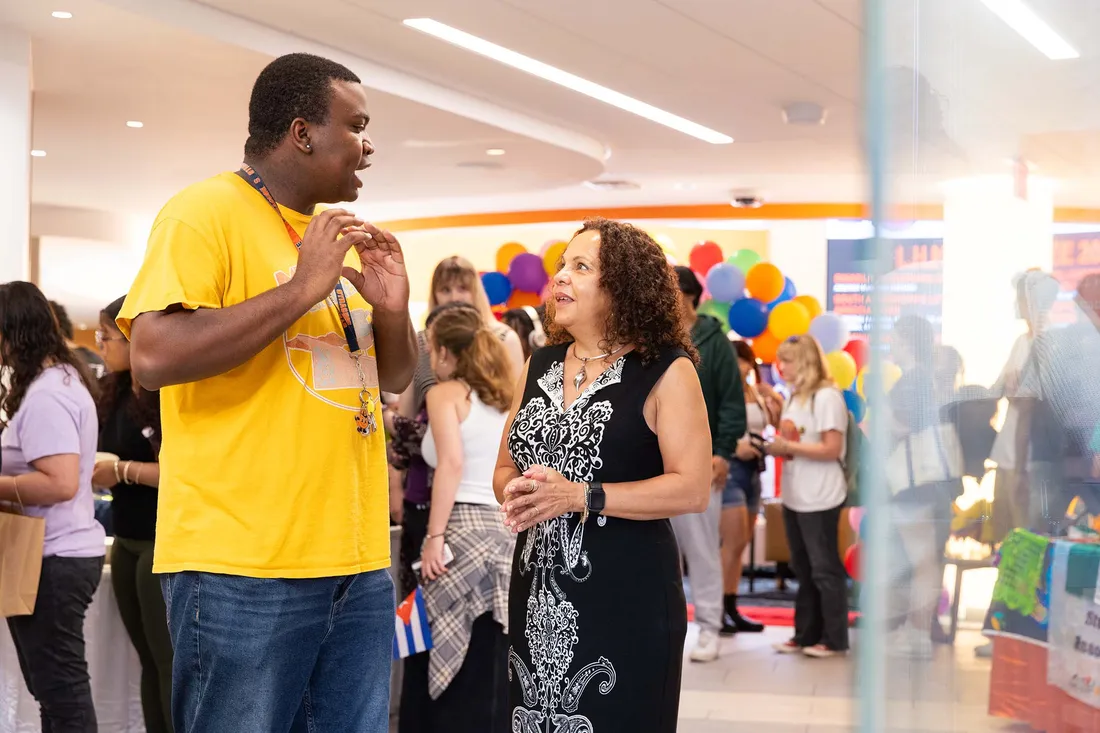
Suzette Meléndez, a teaching professor in the College of Law, with Tommy DaSilva ’26. She considers the U.S. Latine community a mosaic, not a monolith.
Latine scholarship flourishes in various settings at Syracuse. Academic offerings include the Latino-Latin American studies and Spanish language, literature and culture bachelor’s degree programs as well as Syracuse Abroad experiences in Santiago (Chile) and Madrid (Spain). Students also can choose from a range of Latine clubs, groups and fraternal organizations.
Suzette Meléndez, a teaching professor in the College of Law, is part of the University’s illustrious Latine faculty. She embodies this year’s Heritage Month theme, “Pioneers of Change: Shaping the Future Together,” with her trailblazing work in family law, domestic violence and the delivery of legal services to women and children. These scholarly pursuits have helped put the University on the multicultural map while giving a voice to marginalized communities.
Meléndez insists that the U.S. Latine community is a mosaic, not a monolith. “We must learn to appreciate the multiple representations of how we live and what we contribute,” says Meléndez, who recently concluded a faculty fellowship in the Office of the Associate Provost for Strategic Initiatives and the Office of Diversity and Inclusion.
A common thread of her work is the interplay between law and familia. “Family is a tremendous influencer, supporter, teacher and builder of community in Latine cultures,” Meléndez says. “Family law illustrates how parenting and familial bonding across cultures is complex, nuanced and emblematic of the human experience.”
Fostering Community
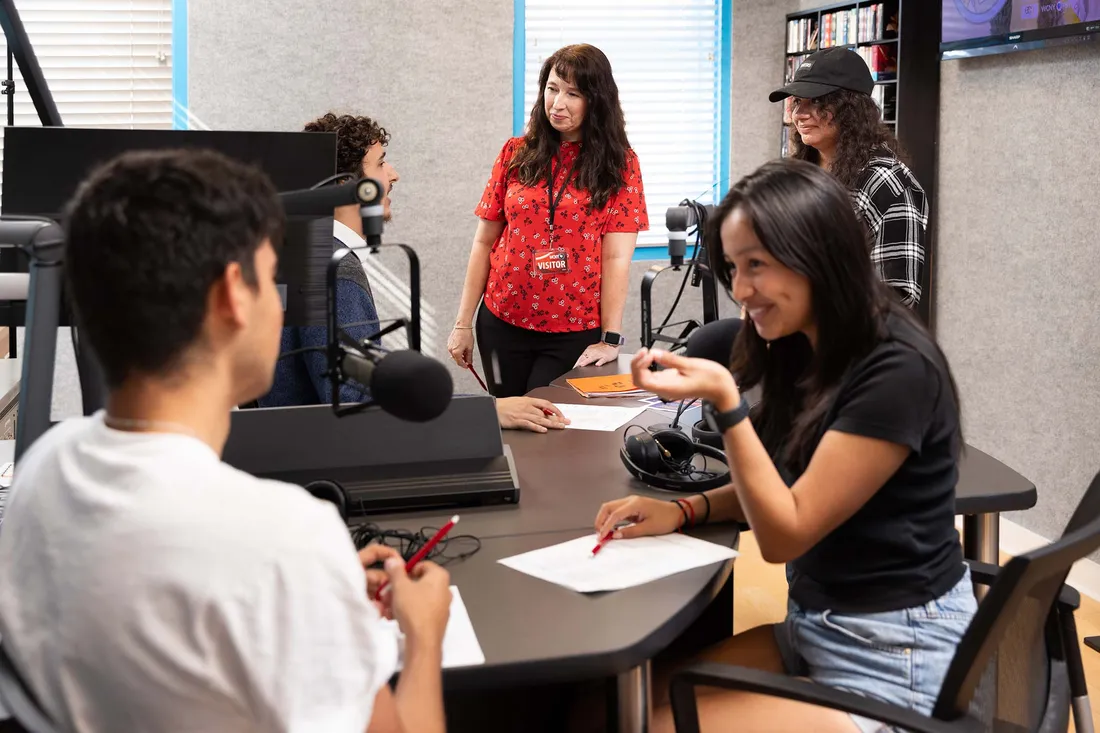
Ticio Quesada at Pulso Central, which launched Sept. 16. She also co-founded Spanish in Action, an interinstitutional program that educates and connects Spanish speakers.
Almost any scholarly conversation about Latine communities touches on equity, access and representation. Emma Ticio Quesada, professor of Spanish and linguistics, addresses these issues through Spanish in Action, an interinstitutional program that she has co-founded in the University’s Engaged Humanities Network.
“We educate and connect native and non-native Spanish speakers while promoting inclusion and social justice,” says Ticio Quesada, who also teaches an immersive course called Community Outreach: Language in Action (SPA 439).
Spanish in Action grew out of her interest in Spanish-English bilingual communities and the “relevance of bilingualism,” in general. She says that studying—and teaching—a language like Spanish, with dozens of dialects and 600 million speakers worldwide, “promotes understanding of different cultures and communities.”
Ticio Quesada also has been involved with Pulso Central, whose debut coincided with the start of this year’s Latine Heritage Month. Broadcast by WCNY, the station is a platform for music and talk that engages listeners and fosters community connection. Pulso Central is an “extraordinary, new pedagogical tool” that educates students, too, she observes.
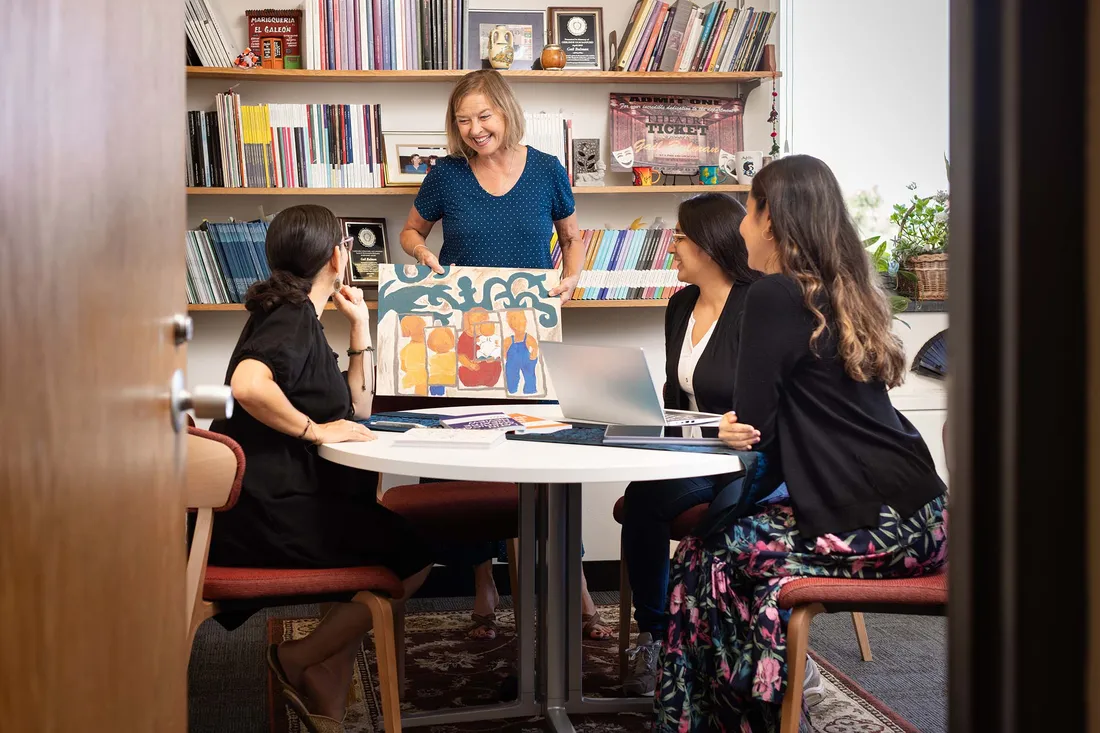
Gail Bulman G’96 (standing), professor and chair of LLL, uses Latin American and Latine theater to explore social and political issues.
A similar ethos pervades the work of Gail Bulman G’96, whose interest in Latin American and Latine theater spans considerable social, political and historical terrain. The professor and chair of LLL believes that education can build empathy while fostering a sense of community.
“My class is usually the first time that students are hearing of, reading or watching a Spanish-language play,” says Bulman, who regularly invites drama companies from Spain and Latin America as well as U.S. Latine communities to perform on campus. “Theater can be a remarkable teacher.”
Absorbing History
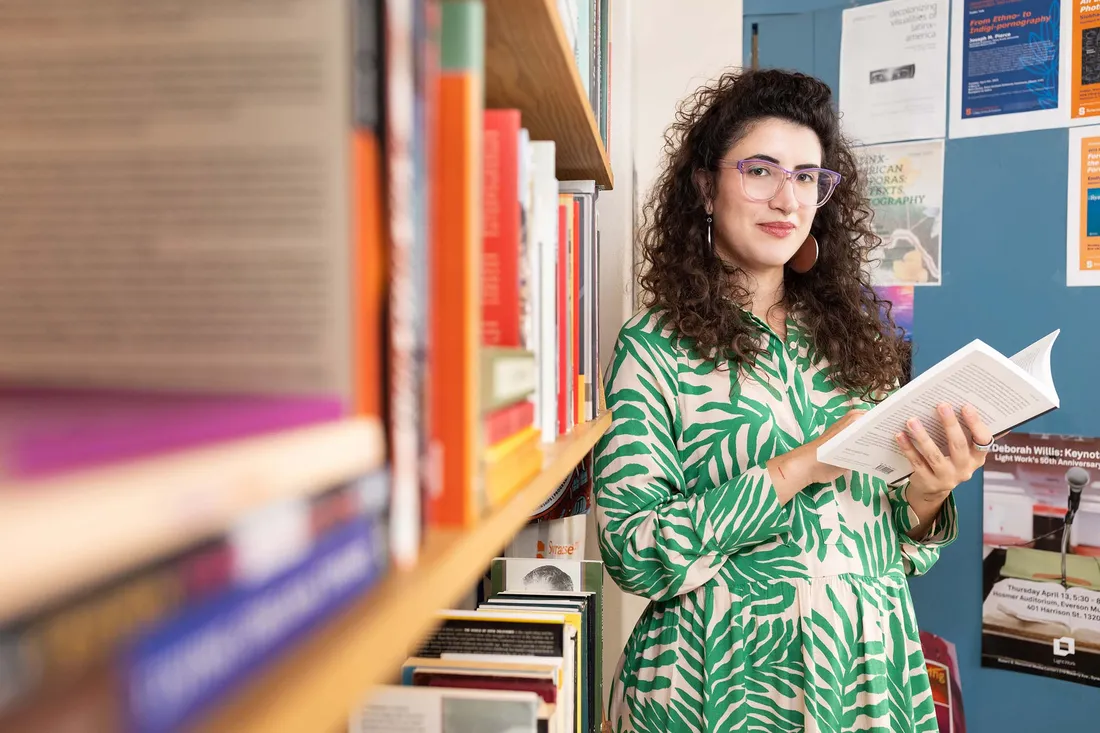
Cristina E. Pardo Porto, assistant professor of Spanish, is working on a book project about U.S.-based artists from Central America and the Caribbean.
The Latine community—and its influence on American culture and art—is everywhere, notes Cristina E. Pardo Porto, assistant professor of Spanish. She is particularly interested in the diasporic experiences of Central Americans, a “large, but still underrepresented” segment of the Latine community.
“Central Americans have connections with other diasporic networks, like those in the Caribbean,” says the Humanities Center’s former faculty fellow, who is working on a book project about U.S.-based artists from Central America and the Caribbean. “There are lots of gaps and biases in institutional representations of Latine and Latin American histories.”
For Pardo Porto and her colleagues, Heritage Month is more than a celebration. “It’s an opportunity to raise awareness of a rich cultural history and to advocate for the inclusion and visibility of all Latine communities.”
Adds Meléndez: “By acting with a sense of equity and understanding, we can see ourselves in others and learn to appreciate our differences.”

